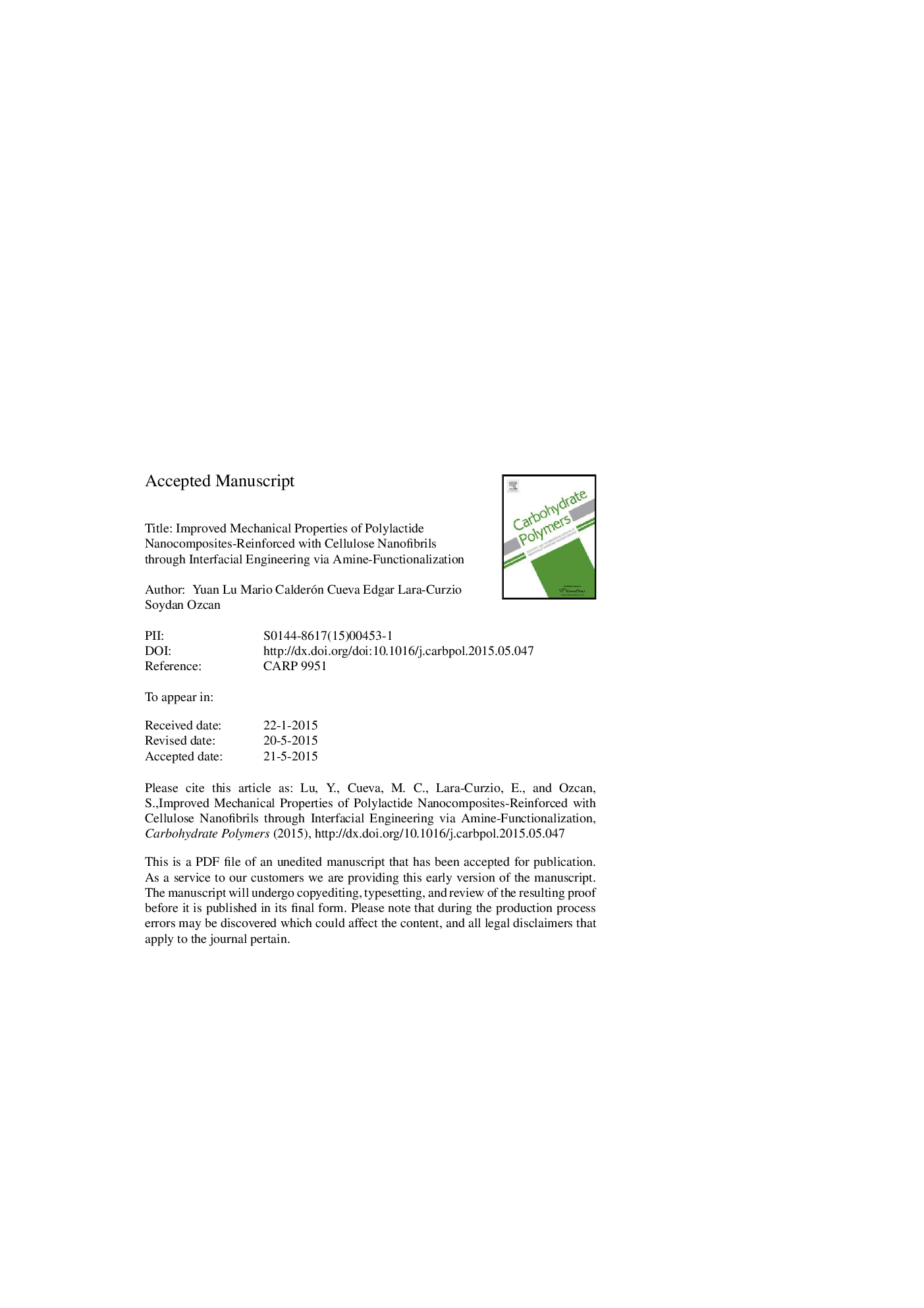| کد مقاله | کد نشریه | سال انتشار | مقاله انگلیسی | نسخه تمام متن |
|---|---|---|---|---|
| 7787723 | 1500627 | 2015 | 32 صفحه PDF | دانلود رایگان |
عنوان انگلیسی مقاله ISI
Improved mechanical properties of polylactide nanocomposites-reinforced with cellulose nanofibrils through interfacial engineering via amine-functionalization
ترجمه فارسی عنوان
بهبود خواص مکانیکی نانوکامپوزیتهای پلی اتیلن- تقویت شده توسط نانوفیبریل سلولز از طریق مهندسی اینترفیس با استفاده از آمین
دانلود مقاله + سفارش ترجمه
دانلود مقاله ISI انگلیسی
رایگان برای ایرانیان
کلمات کلیدی
موضوعات مرتبط
مهندسی و علوم پایه
شیمی
شیمی آلی
چکیده انگلیسی
One of the main factors responsible for the mechanical and physical properties of nanocomposites is the effectiveness of the interfacial region to transfer loads and mechanical vibrations between the nano-reinforcements and the matrix. Surface functionalization has been the preferred approach to engineer the interfaces in polymer nanocomposites in order to maximize their potential in structural and functional applications. In this study, amine-functionalized cellulose nanofibrils (mCNF-G1) were synthesized via silylation of the hydroxyl groups on the CNF surface using 3-aminopropyltrimethoxysilane (APTMS). To further increase the amine density (mCNF-G2), dendritic polyamidoamine (PAMAM) was grafted onto mCNF-G1 by the Michael addition of methacrylate onto mCNF-G1, followed by the transamidation of the ester groups of methacrylate using ethylenediamine. Compared to native CNF-reinforced, poly(l-lactide) (PLLA) nanocomposites, amine-functionalized CNF exhibited significantly improved dispersion and interfacial properties within the PLLA matrix due to the grafting of PLLA chains via aminolysis. It is also a more effective nucleating agent, with 15% mCNF-G1 leading to a crystallinity of 32.5%, compared to 0.1 and 8.7% for neat PLLA and native CNF-reinforced composites. We have demonstrated that APTMS-functionalized CNF (mCNF-G1) significantly improved the tensile strength compared to native CNF, with 10% mCNF-G1 being the most effective (i.e., >100% increase in tensile strength). However, we also found that excessive amines on the CNF surface (i.e., mCNF-G2) resulted in decreased tensile strength and modulus due to PLLA degradation via aminolysis. These results demonstrate the potential of optimized amine-functionalized CNF for future renewable material applications.
ناشر
Database: Elsevier - ScienceDirect (ساینس دایرکت)
Journal: Carbohydrate Polymers - Volume 131, 20 October 2015, Pages 208-217
Journal: Carbohydrate Polymers - Volume 131, 20 October 2015, Pages 208-217
نویسندگان
Yuan Lu, Mario Calderón Cueva, Edgar Lara-Curzio, Soydan Ozcan,
